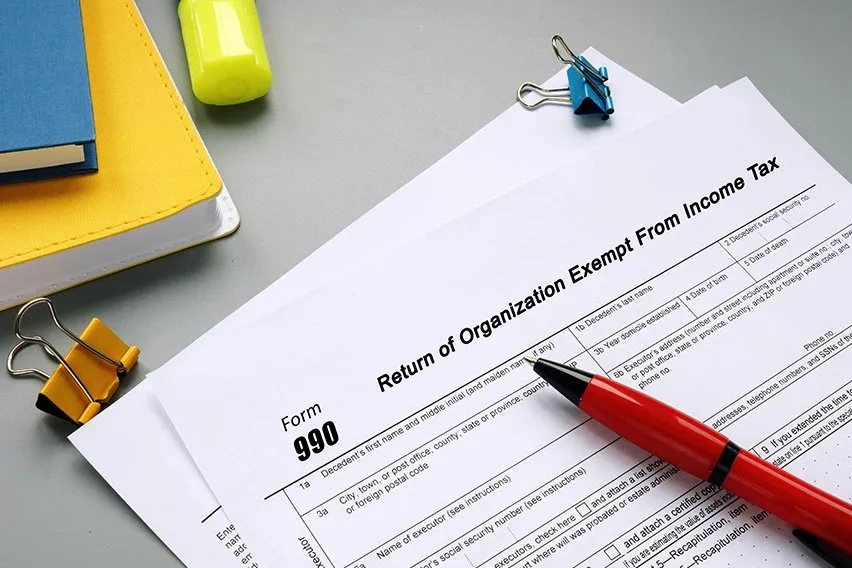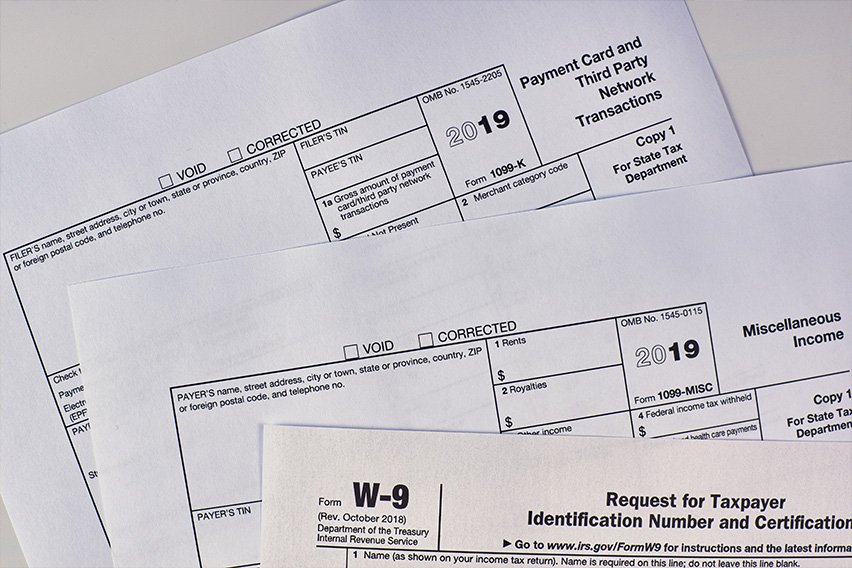Nonprofit Tax Deductions for 501(c)(3) Organizations

Nonprofit organizations receive special incentives and benefits when it comes to filing federal taxes. The financial and legal situation for nonprofit groups and charities is often much different than it is for businesses that exist to make a profit. Whether you run an organization or make voluntary contributions to one, this post will cover what you should know about deductions for nonprofits.
The tax deduction process can feel as though it gets complex rather quickly. But when you know what to track and how to stay organized, you can avoid stress during tax season and handle deductions like a pro.
Here’s What We’ll Cover:
How Tax Policies Can Help Nonprofit Organizations
Special Tax Considerations for Nonprofit Groups
6 Common Tax Savings for Nonprofit Organizations
Special Considerations for Charitable Giving
How to Use Accounting Best Practices at Tax Time
Be Smart about Nonprofit Tax Savings
More Resources for Nonprofit Organizations
How Tax Policies Can Help Nonprofit Organizations
If you operate or work for a charity, you may already know how important it is to save as much money as possible. Due to limited resources and tight funding, most charitable groups are eager to take advantage of the official tax-exempt status they can obtain through the IRS. Tax-exempt means that the organization does not have to pay federal income tax on money that comes into the organization.
Even if a charitable group makes money from taxable income and charitable contributions, the current laws allow approved groups to file some income as unrelated business income. This means that the IRS acknowledges the incoming money, but it does not consider it in the same category as revenue earned by a for-profit company.
Tax-exempt status also means that eligible organizations are not responsible for many state-level taxes, including sales and property tax. These amounts can greatly reduce an organization’s financial burden over the course of a fiscal year. Additionally, donors who give money to tax-exempt groups are often able to write off these amounts on their own personal returns.

Special Tax Considerations for Nonprofit Groups
Even though many organizations have 501(c)(3) status, which offers tax-exempt protections, it does not mean that the organization doesn’t need to worry about returns. In fact, it’s extremely important for charities to file the appropriate paperwork each year to maintain transparency with annual reporting.
Unless your organization is faith-based, a government entity, or covered under a return filed by a parent organization, be prepared to file Form 990 each year at tax time. This form is required by the standard federal deadline and helps an organization maintain good standing.
Form 990 is also a public document, meaning that any citizen can access these submissions. This provides transparency and accountability for tax-exempt organizations that collectively receive millions of dollars each year in charitable contributions, and through fundraising.
Is Every Not-for-profit Organization Tax-Exempt?
A common misconception is that every charity has tax-exempt status, but that’s not always the case.
Some of the basic reasons why an organization may not have tax-exempt or 501(c)(3) status are:
- It’s a new organization that hasn’t yet submitted the necessary documents
- The 501(c)(3) application has been rejected by the IRS
- The organization’s previous tax-exempt status has expired without renewal
- The group has failed to file an annual return for three consecutive years or more
While it may be easy to think that tax-exempt organizations don’t need to take advantage of common savings, that’s not true across the board. Charitable groups may rely on beneficial savings and write-offs while they secure, renew, or troubleshoot issues with their status. Your tax return and bank account will thank you.
6 Common Tax Savings for Nonprofit Organizations
If your organization holds 501(c)(3) status already, some tax savings and write-offs may work a bit differently. You should always check with your organization’s personal tax professional or licensed CPA to understand which tax deductible items you can and should claim. Below are some of the most common write-offs for charitable organizations that need them.
1. Compensation for Staff Members
Employee wages and benefits are some of the most common and important deductions to include on a tax return. This is partly due to how much of the budget these costs take up throughout the year. If your group has hired staff members, be sure to make note of wages, payroll, and benefits.
Most charitable organizations don’t provide payment to volunteers. However, if your organization hires subcontractors to handle various projects and events, the IRS may consider these labor costs tax allowable expenses. Keeping detailed records of any payroll-related payments can help.
Additionally, board members may be able to claim certain benefits on their own tax returns. This could include travel-related, tax-deductible expenses related to meetings and activities. The organization as a whole, however, cannot include payments to these individuals as write-offs.
2. Maintenance and Repair Costs
Depending on the type of work an organization engages in, the group may rely on maintenance and repair work to keep operations running smoothly. This may take the form of residential property repairs, vehicle upkeep, and other integral community services. While a charitable organization might receive charitable contributions to cover these costs, other times the expenses are tax deductible, and are covered from the organization’s own bank accounts and considered overhead costs.
Keep tabs on any ongoing maintenance costs throughout the year, and touch base with your tax professional about which expenses apply for tax exemption. If your organization engages in significant community revitalization, this may be especially important at tax time.
3. Professional Licenses and Training
Some organizations offer social and community-related services that require special licenses or training. Additionally, if staff members need to pay for continuing education courses or professional certifications, keep records of these costs. Any additional training that is considered essential to the regular work you perform could be considered a tax write-off.
4. Advertising and Marketing
How does your charitable organization spread the word about its services? Do you pay for different channels of community outreach and marketing? If so, you may be investing a lot of your budget into marketing materials, print and digital ads, and other communication resources.
Depending on the purpose of your advertising and marketing efforts, you may be able to deduct some of the associated costs on your annual return. Moreover, it never hurts to ask what special benefits advertisers can offer to your organization based on the work you perform. As a community service provider, you may be surprised by the extent to which some businesses and advertisers are willing to help.
5. Financial Losses
Did your organization experience any financial setbacks over the course of a year? Although you can’t deduct any losses that came as a result of normal activities (like spending money on events, services, etc.), you can deduct capital and net losses.
These losses include any monetary amount that dipped into the red as a result of business or trade-related activities. For a charity, this includes losses related to the sale of different properties, real estate, or organizational holdings. If your group experienced a loss during the sales process, be sure to document with paperwork related to the original purchase, estimated value, and eventual sale.
6. Home and Office Space
Where does your organization conduct daily operations? Rental and office-related costs are one of the most popular categories for savings and write-offs, so don’t neglect to include these items at filing time. To count as a true deduction, any home or office-related expense should be critical to the regular operations of your organization, rather than a non-essential preference.
It should be noted that there are some rules associated with home office space deductions on your personal and business tax returns. If these write-offs overlap, you may need to choose one way to file. Check with your tax advisors for specific questions about your personal tax situation.
Special Considerations for Charitable Giving
Many taxpayers make important tax deductible contributions to charities throughout the year. These contributions can include:
- Monetary tax donation deductions in the form of recurring pledges
- One-time, lump sum cash donations
- Non-cash charitable donations of goods, materials, and supplies
- Intangible charitable donations related to time, resources, and skills
As a leader in the nonprofit space or within your community, you can encourage donors and volunteers to track the money and time that they contribute for their own personal tax exemptions. If you have logs for volunteer hours and donation summaries, it’s always helpful to provide these prior to filing time. Many 501(c)(3) organizations send quarterly or annual updates in the mail so that taxpayers can provide these to their own tax professionals when the time comes.
Although there’s no additional write-off or deduction that the organization can claim for these important activities, you can ensure that your most engaged community members have what they need. In turn, you may experience better results when it comes to continued financial and personal involvement.

How to Use Accounting Best Practices at Tax Time
Even in a 501(c)(3) organization, choosing the right accounting platform or software can help make financial management easier throughout the year. A powerful and mobile accounting platform like FreshBooks allows your nonprofit team members to:
- Accurately track tax-deductible expenses
- Categorize important financial information
- Generate profit and loss reports
- Keep tabs on payroll and outgoing payments
- Provide access to an accountant or tax professional
- Proactively plan tax documents through better organization
When combined into one powerful system, these accounting procedures can help a nonprofit organization and its employees reap the most benefits when filing Form 990 or other important documentation to the IRS. For organizations that rely on visibility and accountability, it’s also wise to incorporate a foolproof system that protects you.
In the event that stakeholders have questions or concerns, you can always back up your financial processes with your accounting procedures. Not only does this greatly assist your efforts when it comes to claiming the right deductions, but it also helps charitable organizations maintain the highest level of credibility and integrity.
Be Smart about Nonprofit Tax Savings
The federal tax code in the United States is complex, especially if you serve in an organization that is eligible for significant tax benefits. Write-offs are popular ways to save money at tax time, and most organizations stand to benefit in some way from including these line items on their annual returns.
As with any major tax decision in your nonprofit, you should consult professional tax help when you’re at a standstill, or when you need to verify a specific tax law. The more organized and transparent you can be, the better results you will experience year after year.
More Resources for Nonprofit Organizations
- Bookkeeping for a Non Profit Organization
- How to Do Accounting for Nonprofits
- How to Start a Nonprofit
RELATED ARTICLES

 Five Easy Ways to Tackle Tax Season When You're Self-Employed
Five Easy Ways to Tackle Tax Season When You're Self-Employed How the Self-Employed Can Prepare for Tax Season All Year Long
How the Self-Employed Can Prepare for Tax Season All Year Long Five Tips for Freelancers Preparing for Tax Season
Five Tips for Freelancers Preparing for Tax Season How to Manage Payroll—Payroll Tips for Small Businesses
How to Manage Payroll—Payroll Tips for Small Businesses Cash vs. Accrual Accounting: Difference Explained
Cash vs. Accrual Accounting: Difference Explained How to File 1099: 5 Easy Steps
How to File 1099: 5 Easy Steps